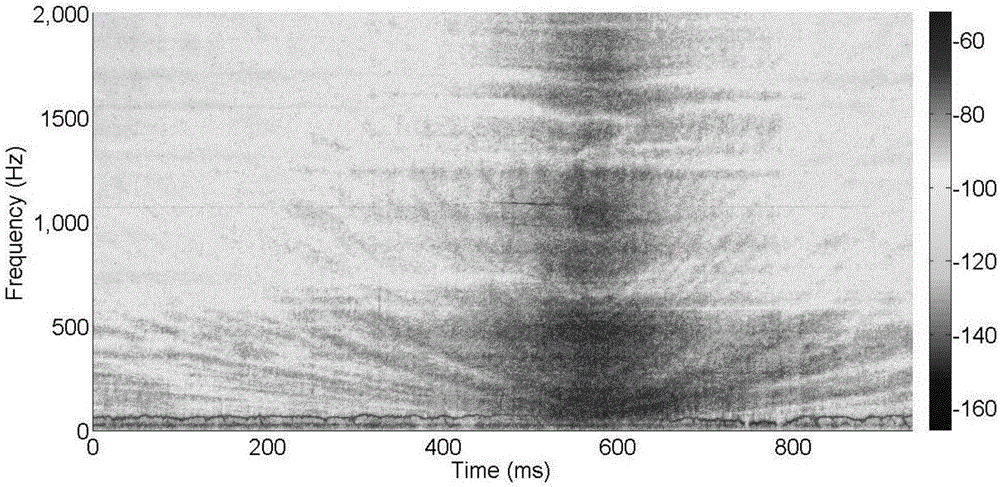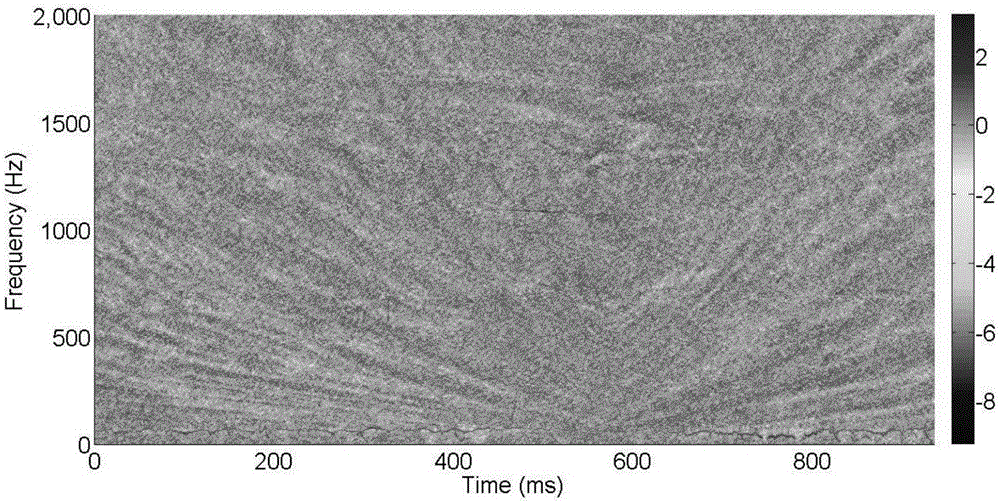Underwater target recognition method based on deep learning
An underwater target and deep learning technology, applied in neural learning methods, pattern recognition in signals, character and pattern recognition, etc. Subject to the subjective influence of people and other issues, to achieve the effect of improving the recognition rate
- Summary
- Abstract
- Description
- Claims
- Application Information
AI Technical Summary
Benefits of technology
Problems solved by technology
Method used
Image
Examples
Embodiment Construction
[0049] Now in conjunction with embodiment, accompanying drawing, the present invention will be further described:
[0050] The overall process of the underwater target recognition method based on deep learning is as follows: figure 1 As shown, the specific steps are as follows:
[0051] (1) Obtain the power spectrum characteristics of the original ship target radiation noise data in segments.
[0052] Obtain the original ship target radiation noise sequence, the sampling frequency of the signal is 4KHz, and perform segmentation processing to obtain segmented data x(n), n=0,1,2,...,N-1, according to the formula Estimate the power spectrum of the segmented data, and average the power spectrum of the adjacent 4 segments of data to obtain the final calculation result of the power spectrum feature:
[0053]
[0054] where f=(f 1 , f 2 , f 3 ,..., f M ) represent the corresponding discrete frequency points. Since the main spectral components of the ship radiation noise si...
PUM
 Login to View More
Login to View More Abstract
Description
Claims
Application Information
 Login to View More
Login to View More - R&D
- Intellectual Property
- Life Sciences
- Materials
- Tech Scout
- Unparalleled Data Quality
- Higher Quality Content
- 60% Fewer Hallucinations
Browse by: Latest US Patents, China's latest patents, Technical Efficacy Thesaurus, Application Domain, Technology Topic, Popular Technical Reports.
© 2025 PatSnap. All rights reserved.Legal|Privacy policy|Modern Slavery Act Transparency Statement|Sitemap|About US| Contact US: help@patsnap.com



